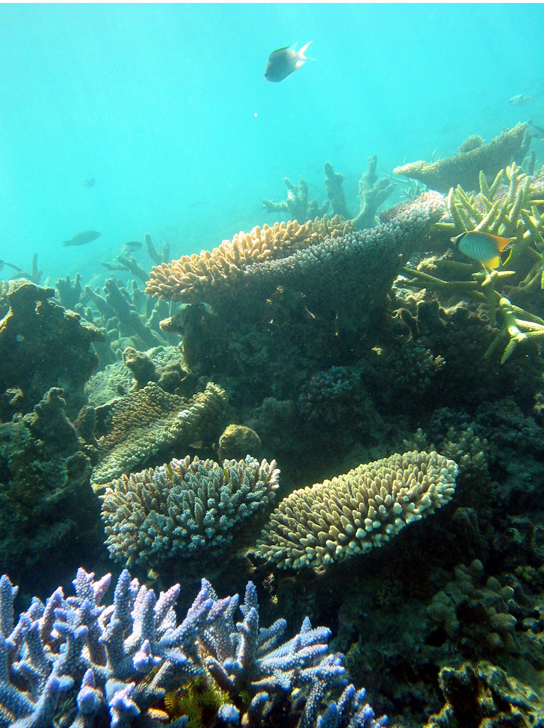| << Chapter < Page | Chapter >> Page > |

Together, climate change and human activity pose dual threats to the long-term survival of the world’s coral reefs. The main cause of killing of coral reefs is warmer-than-usual surface water. As global warming raises ocean temperatures, coral reefs are suffering. The excessive warmth causes the coral organisms to expel their endosymbiotic, food-producing protists, resulting in a phenomenon known as bleaching. The colors of corals are a result of the particular protist endosymbiont, and when the protists leave, the corals lose their color and turn white, hence the term “bleaching.”
Rising levels of atmospheric carbon dioxide further threaten the corals in other ways; as carbon dioxide dissolves in ocean waters, it lowers pH, thus increasing ocean acidity. As acidity increases, it interferes with the calcification that normally occurs as coral animals build their calcium carbonate homes.
When a coral reef begins to die, species diversity plummets as animals lose food and shelter. Coral reefs are also economically important tourist destinations, so the decline of coral reefs poses a serious threat to coastal economies.
Human population growth has damaged corals in other ways, too. As human coastal populations increase, the runoff of sediment and agricultural chemicals has increased, causing some of the once-clear tropical waters to become cloudy. At the same time, overfishing of popular fish species has allowed the predator species that eat corals to go unchecked.
Although a rise in global temperatures of 1°C–2°C (a conservative scientific projection) in the coming decades may not seem large, it is very significant to this biome. When change occurs rapidly, species can become extinct before evolution leads to newly adapted species. Many scientists believe that global warming, with its rapid (in terms of evolutionary time) and inexorable increases in temperature, is tipping the balance beyond the point at which many of the world’s coral reefs can recover.
Estuaries are biomes that occur where a river, a source of fresh water, meets the ocean. Therefore, both fresh water and salt water are found in the same vicinity; mixing results in a diluted (brackish) salt water. Estuaries form protected areas where many of the offspring of crustaceans, mollusks, and fish begin their lives. Salinity is an important factor that influences the organisms and the adaptations of the organisms found in estuaries. The salinity of estuaries varies and is based on the rate of flow of its freshwater sources. Once or twice a day, high tides bring salt water into the estuary. Low tides occurring at the same frequency reverse the current of salt water ( [link] ).

Notification Switch
Would you like to follow the 'Concepts of biology' conversation and receive update notifications?